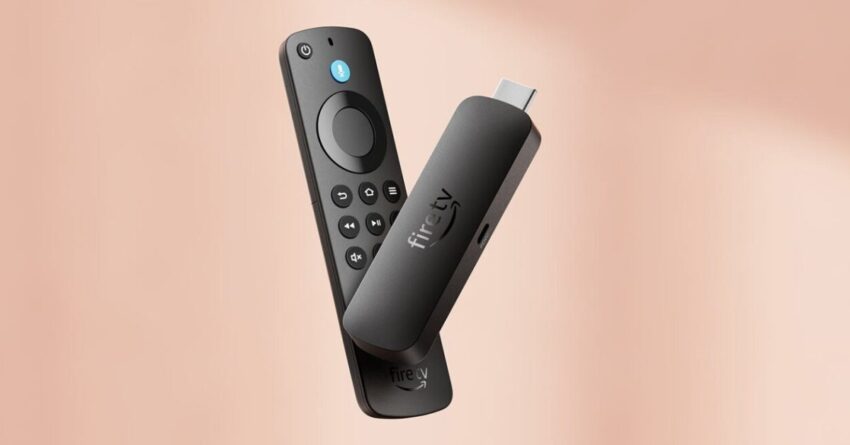
amazon s new fire tv os streams Amazon has introduced its new Fire TV OS, Vega OS, which streams Android apps while utilizing less powerful hardware at the same price point.
amazon s new fire tv os streams
Amazon’s Hardware Event: A New Era for Fire TV
Earlier this week, Amazon held its much-anticipated annual fall hardware event, showcasing a range of new products, including smart speakers, smart displays, and streaming devices. Among the highlights was the introduction of the new $40 Fire TV Stick Select, which aims to enhance the streaming experience for users. However, the most significant announcement was the unveiling of Vega OS, a long-awaited shift away from the existing Android-based Fire OS platform.
The transition to Vega OS marks a pivotal moment for Amazon, as it seeks to redefine its streaming ecosystem. This new operating system is designed to facilitate the streaming of Android apps, a move that raises questions about the implications for both consumers and developers. The decision to shift away from Fire OS, which has been the foundation of Amazon’s streaming devices, suggests a strategic pivot aimed at enhancing user experience and expanding content availability.
The Shift to Vega OS
Vega OS represents a significant departure from the traditional Fire OS, which has been criticized for its limitations in app availability and performance. By adopting a new platform that streams Android apps, Amazon aims to provide users with access to a broader range of content, including popular streaming services and applications that were previously unavailable on Fire devices.
This transition is not merely cosmetic; it reflects Amazon’s recognition of the growing demand for diverse content options among consumers. By integrating Android app streaming capabilities, Vega OS positions itself as a more versatile and appealing choice for users who are accustomed to the extensive app ecosystems available on Android devices.
Hardware Considerations
One of the most striking aspects of the Vega OS announcement is the hardware specifications of the new Fire TV Stick Select. Despite the introduction of a more advanced operating system, the hardware itself is reportedly less powerful than its predecessors. This raises concerns about the performance and user experience of the device, especially when streaming demanding applications.
Critics may question why Amazon would choose to implement a new operating system on hardware that is not equipped to fully leverage its capabilities. The decision to maintain the same price point while offering less powerful hardware could be seen as a gamble, as it may lead to performance issues that could frustrate users.
Implications for Users
For consumers, the introduction of Vega OS could be a double-edged sword. On one hand, the ability to stream Android apps could significantly enhance the content library available on Fire TV devices. Users may find themselves with access to a wider array of streaming services, games, and applications that were previously unavailable or limited on Fire OS.
On the other hand, the potential performance limitations of the new hardware could hinder the overall user experience. If the device struggles to run demanding applications smoothly, users may become disillusioned with the new offering. This could lead to negative reviews and a decline in customer satisfaction, ultimately impacting Amazon’s reputation in the competitive streaming market.
Developer Reactions and Industry Impact
The introduction of Vega OS is likely to elicit varied reactions from developers and industry stakeholders. For developers, the ability to create applications that can be streamed on Fire TV devices may open up new opportunities for engagement with a broader audience. However, there are also concerns about the potential fragmentation of the app ecosystem.
Developers may need to adapt their applications to ensure compatibility with Vega OS, which could require additional resources and time. This transition may also lead to a period of uncertainty as developers navigate the new platform and its capabilities. The success of Vega OS will ultimately depend on how well it supports existing applications and how easily developers can create new ones.
Competitive Landscape
Amazon’s move to introduce Vega OS comes at a time when the streaming market is increasingly competitive. Companies like Roku, Apple, and Google have established themselves as dominant players, each offering their own unique ecosystems and content libraries. By adopting Vega OS, Amazon aims to carve out a distinct niche in this crowded landscape.
However, the effectiveness of this strategy remains to be seen. If Vega OS fails to deliver a seamless and high-quality streaming experience, Amazon may struggle to attract users away from its competitors. The success of the new operating system will depend not only on its content offerings but also on its performance and user interface.
Consumer Expectations and Future Developments
As Amazon rolls out Vega OS, consumer expectations will play a crucial role in determining its success. Users are likely to have high hopes for the new platform, especially given the promise of expanded app availability. However, if the hardware limitations lead to a subpar experience, those expectations may quickly turn to disappointment.
Looking ahead, Amazon will need to address any performance issues that arise and ensure that Vega OS continues to evolve in response to user feedback. This may involve future hardware upgrades or software updates aimed at optimizing performance and enhancing the overall user experience.
Long-Term Strategy
The introduction of Vega OS is part of Amazon’s broader long-term strategy to strengthen its position in the streaming market. By focusing on content availability and user experience, Amazon aims to create a more compelling offering that can compete with established players. However, this strategy will require careful execution and ongoing investment in both hardware and software development.
As the streaming landscape continues to evolve, Amazon’s ability to adapt and innovate will be critical. The success of Vega OS may serve as a litmus test for the company’s future endeavors in the tech space, particularly as it seeks to expand its ecosystem and attract new users.
Conclusion
Amazon’s unveiling of Vega OS marks a significant shift in its approach to streaming devices, with the potential to reshape the user experience and content availability. However, the decision to implement this new operating system on less powerful hardware raises important questions about performance and user satisfaction. As Amazon navigates this transition, the reactions of consumers and developers will be pivotal in determining the long-term success of Vega OS and its impact on the competitive streaming landscape.
Source: Original report
Was this helpful?
Last Modified: October 3, 2025 at 9:11 pm
0 views















